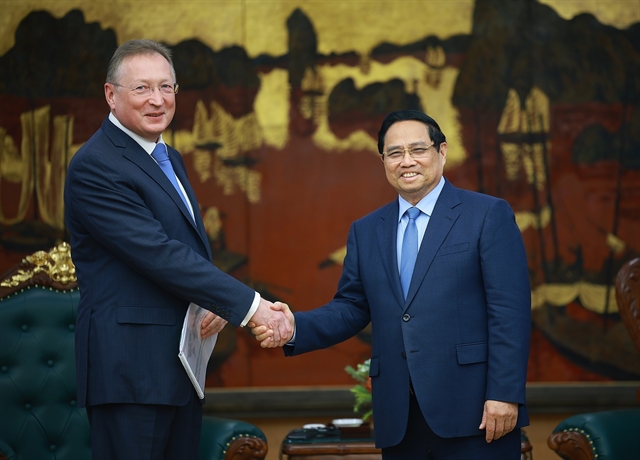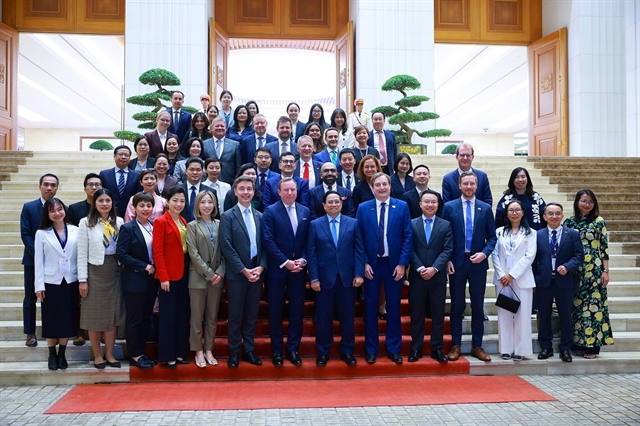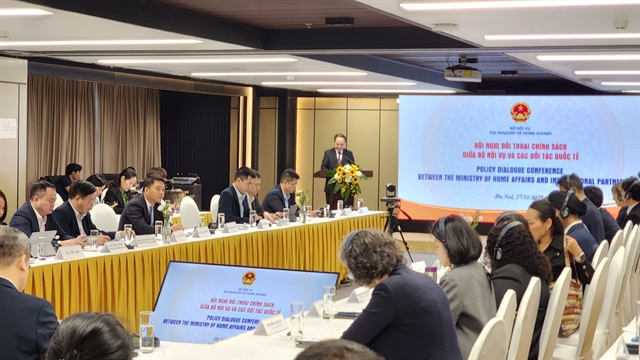 World
World

Ziyang Fan, Mike Gallaher *
Globalisation is under threat. Even before the pandemic, globalisation was already struggling due to years of stagnation in trade growth and uncertainties at the World Trade Organisation (WTO) due to US-China trade tensions. COVID-19 was another blow to the system. And the early departure of the WTO Director-General doesn’t help.
Yet, international trade is critical to economic recovery. This is especially true for digital trade.
As the physical movement of goods and people is restricted, digital trade has played a crucial role in keeping trade flowing – virtually. From cross-border e-commerce and digital payments, to teleconferencing with business partners around the world, to replacing physical documents with electronic records, digitally enabled transactions in goods and services is more important than ever.
Take digital trade in services. Those of us fortunate to be able to work from home the past couple of months are acutely aware of the importance of digital services to productivity and economic activity. Digital services not only allow us to work from home, video conference with colleagues and purchase groceries and other household supplies online; this crisis has given us a glimpse of the future, in which doctors to treat patients in another country by video conference call, teachers provide remote instruction to students studying from their homes, and engineers send design files to 3D printers to replace or modify parts, such as those used for ventilators. As the crisis continues, the inevitable shift toward digital services will be accelerated.
In addition, greater cross-border digital connectivity could enable jobs in both developed countries, such as an American teacher who teaches English to a child in China online, and developing countries, such as a web designer in the Philippines who builds a website for a Canadian company through a freelancer platform.
Yet, expansion of digital trade faces significant challenges. The growing gap in digital development between developing and developed countries could lead to income disparities and digital “monopoly” that crowds out smaller players. Concerns about data privacy, ownership and security could erode the trust that is necessary for a digital economy.
In response, countries have turned to digital protectionism, which seems like an easy fix but, in reality, threatens to increase costs and reduce access to the digital services vital to economic development. Digital protectionism comes in many forms, from restrictions on cross-border data movement and mandates to use local processing facilities, to local equity requirements, foreign licensing requirements that are difficult to fulfil and even tariffs on cross-border “electronic transmissions.”
Here are five ways we can overcome these challenges for digital trade – without protectionism – and create more jobs, human connections and creativity.
1. Advance forward-looking trade agreements. An important first step would be moving forward with the Joint Statement on E-Commerce Initiative, launched at last year’s World Economic Forum Annual Meeting in Davos, which seeks to modernize rules governing digital trade. The Japanese government has shown tremendous leadership with its Digital Free Flow with Trust framework, which has the potential to address privacy concerns between the US and Europe as well as stem the tide of data flow restrictions.
With or without the WTO, progress on digital trade through bilateral and regional trade agreements will continue. The US-Mexico-Canada Agreement (USMCA), the Comprehensive and Progressive Agreement for Trans-Pacific Partnership (CPTPP) and the Digital Economy Partnership Agreement (DEPA) demonstrate how innovative governments are uniting to modernise trade commitments and address challenges facing the global digital economy. We need to find ways for these agreements to benefit not just a few countries and regions, but the whole world.
2. Promote greater interoperability. Existing digital trade rules are outdated, complex and fragmented, if they exist at all. While the ideal approach is to create a set of global rules, this is difficult given countries’ and regions’ economic, political and cultural differences. One set of “golden rules” that make these different rules interoperable is the key. Take cross-border digital payments, which face divergent regulatory and technical standards. To increase interoperability, policymakers could establish open banking guidelines, agree on “passporting” of payment licenses from one country to another or adopt Financial Action Task Force standards. In the case of digital trade in services, as another example, online license depositories could allow professionals to verify their qualifications in their local jurisdictions for potential cross-border licensing.
3. Digitise trade documentation. With restrictions on physical movement, the COVID-19 pandemic disrupted supply chains and exposed the fact that international trade is a paper-heavy system that relies too much on physical documentation. Digitising the trade process could make international trade more resilient, reduce costs and lower the barrier of entry for SMEs. A good first step would be adopting policies recognising and permitting electronic signatures, transactions and records, such as UNCITRAL’s Electronic Transfer Records. Leveraging the public-private cross-industry digital platform is another solution.
4. Close the digital divide. World leaders must address the digital divide between developing and developed countries, which the crisis may exacerbate. Developed countries should strengthen aid to developing countries, focusing on digital development. Greater investment in digital infrastructure, connectivity and technical education would benefit developing countries significantly more than misguided policies such as data localization and tariffs on digital goods and services.
5. Build trusted technologies for all. Digital technologies have the potential to reach more people, lower costs and reduce inefficiencies, especially for SMEs. However, the digital trade system will only work if people trust it, especially in the absence of human interactions. We must build trusted technologies for all participants, including stronger data privacy protection, better online dispute systems and algorithms that don’t discriminate against smaller players. This requires true public-private partnership and a human-centred approach.
Progress on digital trade would deliver new relevance for the WTO – but international trade itself is not the goal. International trade, or globalization, is a means to an end: greater inclusion, equality and prosperity for everyone in the global trade system.
Now, we have an opportunity to share these benefits with the world. The COVID-19 pandemic has significantly accelerated the adoption of digital technologies, further highlighting the need to modernise digital trade rules and buck the trend of digital protectionism. Modernising digital trade rules will help us get the economy back on track and, if done right, lead to greater prosperity for all.
*Ziyang Fan, Head of Digital Trade, World Economic Forum
Mike Gallaher, Fellow, Digital Trade, World Economic Forum/Director of Public Policy, VISA




